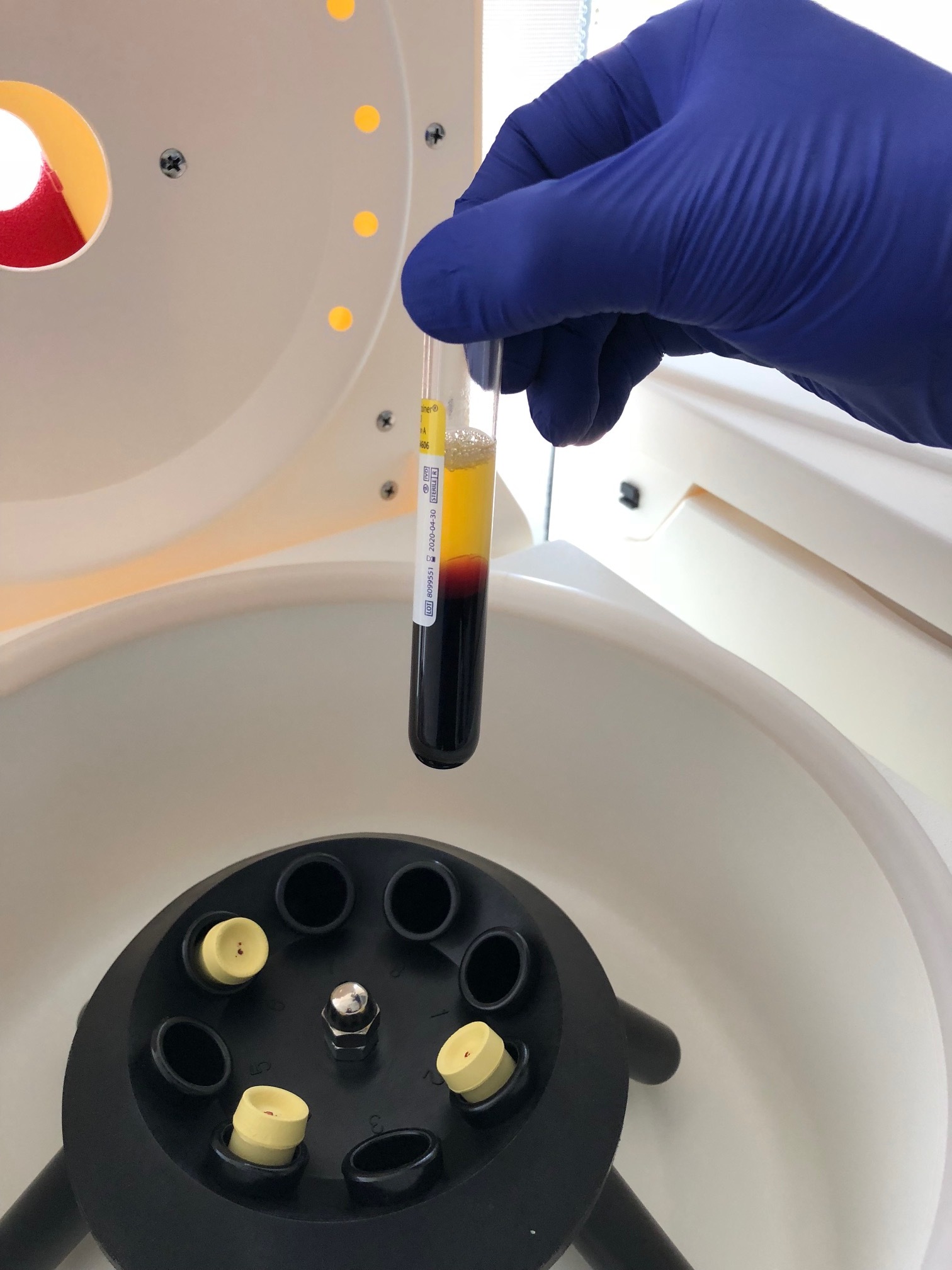Platelet-rich plasma (PRP)
PRP procedures use patients’ own blood to stimulate the healing of acute or chronic injuries. Blood plasma contains immune cells and growth factors that are vital to injury repair.
PRP procedures supply injured tissue with a high concentration of immune cells, proteins, and growth factors from plasma, to bolster the tissue’s ability to rebuild and recover.
The concentrated immune cells, proteins, and growth factors are referred to as PRP or platelet-rich plasma.
PRP treats acute or chronically injured tendons, ligaments, muscles, or joints effectively. Below is an example of a patient’s results from PRP. Notice the cartilage and bone marrow edema improvement:
Before After
This is an example of a patient’s results from platelet-rich plasma (PRP) therapy at Boulder Biologics. Notice the cartilage regrowth and bone marrow edema improvement. We caution that these results are the exception and would not be expected in more advanced/diffuse arthritis patients but it highlights that PRP can positively affect cartilage injury in some patients.
How is PRP Made and Applied?
Patients should expect to be with us for about two hours. The procedure itself takes about 10-30 minutes.
Upon arrival, we check in with the patient and draw their blood.
In our lab, we separate the patient’s plasma from their red blood cells.
Next, we concentrate immune cells, proteins, and growth factors (the PRP) found within the plasma and prepare it for injection. This process takes about an hour.
Once the PRP is ready, we will begin the procedure. Using ultrasound or fluoroscopy for visual guidance, non-acidic and non-toxic numbing medication is injected, and then the PRP is injected by the doctor into the patient’s injury.
The injected PRP stimulates injury repair over time.
For more information about the PRP procedure, see our PRP FAQ website page.
Making PRP Better Than The Rest
Creating effective PRP requires:
Customizing platelet concentration based on the patient’s particular needs
Adequately isolating platelets
Maintaining cell viability
Minimizing red blood cells’ presence in the PRP (for most orthopedic applications)
Customization
Currently, most clinics rely on premade PRP kits sold to them by medical device companies. These kits do not typically allow for customized PRP concentration, causing the clinic using them to take a one-size-fits-all approach to their patient’s treatments.
Customization of platelet concentration is critical to effective PRP treatment since each patient’s issue calls for a different potency of PRP. That’s because:
Patients’ platelet counts vary by age, gender, genetic factors, and lifestyle
Different parts of the body respond best to different concentrations of PRP
For example, nerves tend to recover best from low concentrations of PRP, but tendons and ligaments tend to do better with higher concentrations
Boulder Biologics’s PRP manufacturing strategy allows for customization of PRP concentration based on the patient’s platelet count, age, injury location, and injury severity, unlike clinics that use PRP kits. We also use a hemotologic analyzer to test every patient’s platelet count before preparing their PRP.
Our customization of PRP gives patients the best shot at recovery that PRP has the potential to provide.
Platelet Isolation and Viability
Centrifuges are machines that PRP clinics use to concentrate platelets from patients’ blood. The length of time a patient’s blood spends in the centrifuge, and the centrifuge’s speed influence the quality of the PRP.
Red Blood Cells and Leukocytes
For most orthopedic applications, PRP should be low in leukocytes and red blood cells. At Boulder Biologics, our PRP manufacturing method allows for low red blood cell and leukocyte counts if it is called for.
An example of PRP for an osteoarthritis patient is shown below. The first image is the patient’s CBC. The second image is an analysis of the PRP made for the patient.
Notice that platelets (PLT) are highly concentrated and the red blood cell (RBC) and leukocyte counts are very low in the second photo.
In the first image, the patient’s platelets are at 227, and in the second, they are at 6865.
In the first image, the patient’s WBCs are at 4.36, and in the second, they are at 0.11.
We have effectively obtained a greater than 30-fold concentration in platelets. If you are interested in receiving PRP, we encourage you to reach out to us.
PRP: The Patient’s Initial CBC Result
PRP: The Resulting PRP Analysis
The platelet-plasma volume is separated from the other cells in the patient’s whole blood.
The platelets are concentrated from the patient’s plasma as pellets in the bottom of the conical tubes.






